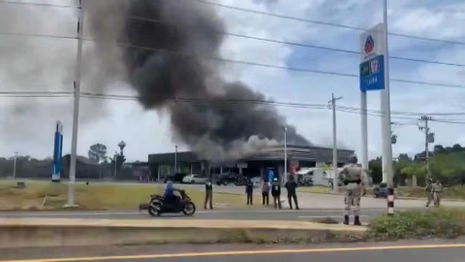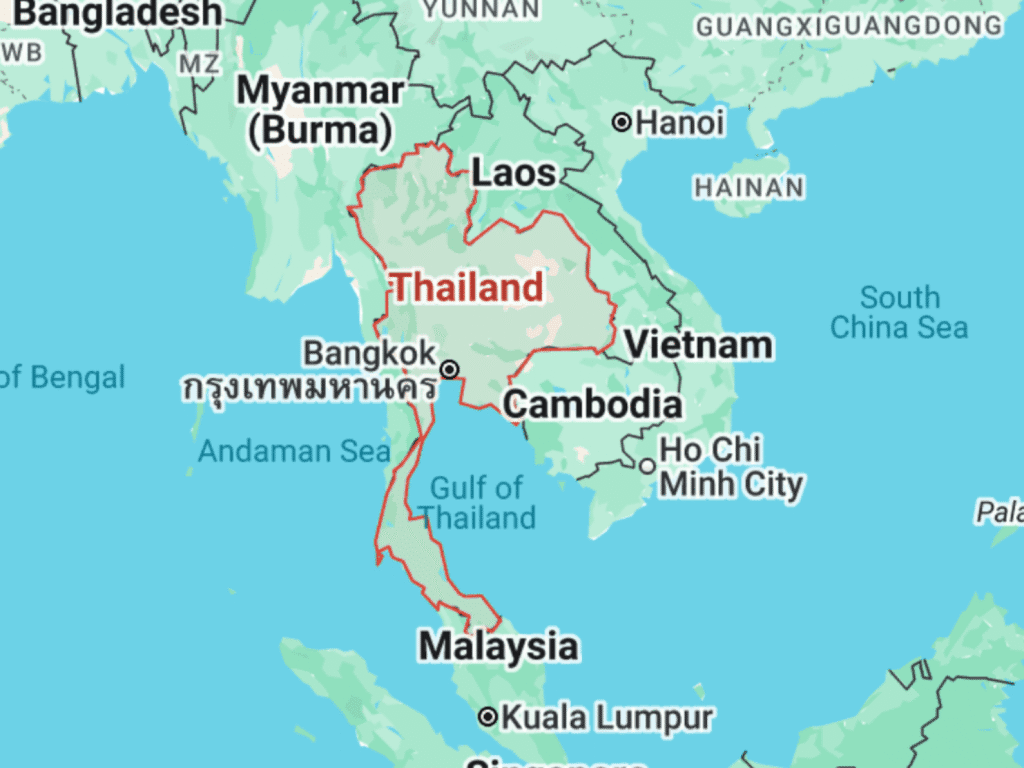
Bangkok/Phnom Penh, July 24, 2025 – A sudden eruption of violence along contested Thailand–Cambodia border has ignited fears of a wider regional conflict. Fresh clashes on Thursday saw exchanges of gunfire, artillery shelling and the first-ever airstrikes by Thai F‑16 jets into Cambodian territory, killing and injuring dozens on both sides.
Key Trending Keywords: Thailand Cambodia border clash, F‑16 airstrikes, landmine explosion, Preah Vihear, Emerald Triangle, ASEAN diplomacy
1. What Happened?
- Landmine Explosion Trigger: On Wednesday, a Thai soldier lost a leg after stepping on a landmine in Ubon Ratchathani province. Bangkok immediately accused Phnom Penh of planting new mines, a charge Cambodia denies, citing leftover ordnance from past wars.
- Cross-border Firefight: Early Thursday, both armies opened fire near the Prasat Ta Muen Thom and Ta Moan Thom temple sites in the Emerald Triangle region. Thailand reported at least 12 civilians killed and 24 injured across four provinces; Cambodian casualties remain unconfirmed.
- First Airstrikes in Border Dispute: In a dramatic escalation, a Thai F‑16 fighter jet bombed two Cambodian military positions near the Preah Vihear temple complex, marking the first use of airpower in this century-long dispute.
2. Historical Context
The Thailand–Cambodia border dispute dates back to colonial-era maps drawn by France in 1907. The International Court of Justice awarded sovereignty over the Preah Vihear temple to Cambodia in 1962, but surrounding territories have remained contested ever since. Intermittent clashes—from 2008–2013 and again in May 2025—have periodically flared into violence.
3. Human and Diplomatic Fallout

- Civilian Impact: Some 40,000 residents in Surin province were evacuated to makeshift shelters as artillery rounds and rockets tore through villages. Hospitals in Si Sa Ket and Surin have evacuated patients amid ongoing shelling.
- Diplomatic Rupture: Both nations have expelled each other’s ambassadors and shut border crossings. Thailand has also halted imports of Cambodian electricity and internet services, while Cambodia banned Thai agricultural products and cultural content.
- Political Repercussions: In Bangkok, Prime Minister Paetongtarn Shinawatra was suspended amid criticism of her handling of the crisis. Acting PM Phumtham Wechayachai has appealed for calm, insisting Thailand will “act in accordance with international law” while protecting its sovereignty.
4. Possible Outcomes

- De-escalation via ASEAN Mediation: ASEAN could broker a ceasefire and revive the Joint Boundary Commission to resume talks, preventing a wider conflict.
- International Court Intervention: Cambodia may again petition the ICJ to reaffirm border rulings; Thailand has thus far rejected third-party jurisdiction.
- Prolonged Low-Intensity Conflict: Both sides may maintain heightened military postures, leading to recurrent skirmishes along the 817-km frontier.
- Regional Spillover: Continued hostilities risk destabilizing Southeast Asia, potentially drawing in neighbouring Laos and Vietnam through refugee flows and economic disruptions.
5. Looking Ahead
As both capitals scramble to mobilize troops and shore up domestic support, the coming days will test ASEAN’s ability to contain the crisis. With trending searches for “F‑16 airstrikes” and “Emerald Triangle dispute” surging online, international attention is focused on whether diplomacy can prevail before hostilities spiral further out of control.
Regional and Global Repercussions

The Thailand–Cambodia border conflict has begun reverberating beyond its immediate theater, drawing in concerned neighbors and global powers:
ASEAN Dynamics
The of Southeast Asian Nations (ASEAN) has convened an emergency foreign ministers’ meeting to chart a collective response. While official statements emphasize a “unified ASEAN voice” calling for de-escalation, individual member states pursue divergent priorities. Vietnam and Laos—both with historical ties to Cambodia—have quietly urged Phnom Penh to pursue restraint, while Myanmar has signaled sympathy for Thailand’s security concerns. Indonesia, leveraging its rotating ASEAN chairmanship, is pushing for a “Five-Point Consensus” framework mirroring its mediation efforts in Myanmar’s internal strife.
China’s Calculus
Beijing, Cambodia’s most steadfast backer, has thus far limited public commentary to calls for calm and dialogue. Behind closed doors, Chinese diplomats are reportedly pressing Cambodia’s leadership to refrain from actions that might alienate Thailand, a significant trading partner under the China-ASEAN Free Trade Area. Concurrently, China is readying an emergency meeting of its foreign affairs commission to discuss contingency plans for protecting its burgeoning investments in Cambodian infrastructure—worth over US$15 billion to date.
United States and European Union
Washington’s immediate priority is safeguarding civilian lives. The U.S. State Department has issued a stern travel warning for both Thai and Cambodian border areas and signaled willingness to host bilateral talks. EU foreign affairs chief Josep Borrell has condemned the use of air power in civilian zones and is exploring targeted sanctions against military leaders on both sides should the conflict deepen.
Economic Impact
Trade Disruptions
Border closures have shuttered key overland trade routes that handle roughly US$4 billion annually between Thailand and Cambodia. Perishables—rice, rubber, and fruit—are the hardest hit, with exporters facing mounting spoilage and lost revenues. Thailand’s Chamber of Commerce estimates losses of US$120 million per week in bilateral trade.
Tourism Decline
Border tourism—once a burgeoning segment with over 500,000 cross-border visitors this year—has collapsed. UNESCO-listed temples such as Preah Vihear and Ta Moan Thom, typically drawing travelers seeking cultural heritage, now lie off-limits. Preliminary figures suggest a 60 percent drop in visitor arrivals in affected provinces, jeopardizing local livelihoods.
Investor Sentiment
Heightened risk perceptions are prompting rating agencies to revisit sovereign outlooks. Moody’s has placed Cambodia on “negative watch,” citing potential strain on fiscal buffers after China-backed infrastructure spending. Thailand faces renewed caution from foreign portfolio investors, with bond yields inching upward and equity inflows slowing.
Humanitarian Response and Challenges
Refugee Flows
Over 50,000 civilians—primarily women, children, and the elderly—have crossed into Thailand seeking safety, swelling UNHCR-registered refugee camps in Sa Kaeo and Chanthaburi provinces. Conditions are strained: camps operate at 130 percent capacity, with acute shortages of clean water and medical supplies.
Aid Operations
International NGOs, led by the Red Cross and Médecins Sans Frontières, have launched cross-border relief corridors. However, intermittent shelling has hampered supply convoys. The UN’s World Food Programme warns that without secure access corridors, an additional 100,000 people could face food insecurity within weeks.
Voices from the Ground
“We fled our homes under shellfire at dawn,” recounts Somnang, a Cambodian rice farmer now sheltered in Thailand. “We have nothing left but memories of our fields.”
“Our children ask why their schools burned,” says Thai villager Kanya, whose home was struck by a stray rocket. “We just want peace.”

Leave a Reply